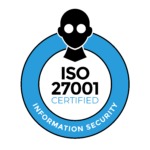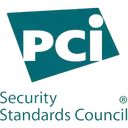NIST SP 800-207 is a cybersecurity framework that transforms how you approach security by implementing Zero Trust Architecture (ZTA). Rather than relying on traditional perimeter-based defenses that assume internal network traffic is trustworthy, this framework operates on the principle of “never trust, always verify.”
What is Zero Trust Architecture?
Zero Trust Architecture represents a shift from the conventional “castle and moat” security model. In traditional security approaches, once a user or device gains access to the internal network, they’re generally trusted to access most resources without additional verification. ZTA eliminates this assumption entirely.
Under Zero Trust principles, every access request—whether from inside or outside the network—must be authenticated, authorized, and continuously validated. This means that a user accessing a file server from their office workstation undergoes the same verification process as someone attempting remote access from an external location.
Core components of NIST SP 800-207
The framework defines three fundamental logical components that work together to implement Zero Trust:
Policy Engine (PE): This serves as the decision-making center of your architecture. The PE evaluates all access requests against organizational policies, threat intelligence, user behavior patterns, and environmental factors to make real-time decisions about granting or denying access.
Policy Administrator (PA): Acting as the communication bridge, the PA takes decisions from the Policy Engine and configures the appropriate enforcement mechanisms. It establishes secure communication channels and manages session credentials when access is approved.
Policy Enforcement Point (PEP): These are the gatekeepers that actually implement access decisions. PEPs can be software agents on devices, network gateways, or resource-specific enforcement mechanisms that monitor and control all communication with protected resources.
Key tenets of Zero Trust
NIST SP 800-207 establishes seven fundamental tenets that define Zero Trust implementation:
- All data sources and computing services are considered resources – Nothing receives automatic trust based on its location or ownership
- All communication is secured regardless of network location – Internal network position doesn’t confer special privileges
- Access is granted on a per-session basis – Each interaction requires fresh authorization
- Access decisions use dynamic policy – Multiple factors including user identity, device posture, and environmental conditions inform access decisions
- Enterprise monitors all owned and associated assets – Continuous security posture assessment is mandatory
- Authentication and authorization are dynamic and strictly enforced – Real-time policy enforcement with continuous reevaluation
- Information collection maximizes security posture improvement – All data about network activity informs policy refinement
Implementation approaches
You can implement Zero Trust through several deployment models:
Enhanced Identity Governance: This approach focuses on user identity as the primary policy driver, with device and environmental factors providing additional context for access decisions.
Micro-segmentation: Resources are protected by creating small, isolated network segments with gateway devices controlling access to each segment.
Network Infrastructure and Software Defined Perimeters: This utilizes network-level controls and overlay networks to implement Zero Trust principles across your infrastructure.
Deployment models
The framework describes four primary deployment architectures:
Device Agent/Gateway Model: Software agents on endpoints work with resource gateways to establish secure, policy-controlled communication channels.
Enclave-Based Deployment: Protects groups of related resources behind gateway devices, suitable for legacy systems or grouped applications serving single business functions.
Resource Portal Model: Provides a single gateway for accessing resources, eliminating the need for software installation on client devices while supporting diverse device policies.
Application Sandboxing: Isolates specific applications or processes in protected environments, ensuring compromise of the host system doesn’t affect critical applications.
Trust algorithm and dynamic decision making
Central to Zero Trust is the trust algorithm—the logic that processes multiple data sources to make access decisions. This algorithm considers:
- Subject database information (user identity, attributes, and historical behavior)
- Asset status and configuration (device security posture, software versions, patches)
- Resource requirements (sensitivity levels, access prerequisites)
- Threat intelligence (current threat landscape, attack indicators)
- Environmental factors (location, time, network conditions)
The algorithm can operate either as criteria-based (meeting specific requirements) or score-based (achieving confidence thresholds), and can be either singular (evaluating each request independently) or contextual (considering historical patterns and behaviors).
Business benefits and use cases
Zero Trust Architecture addresses several modern business scenarios:
Remote Work: Enables secure access to corporate resources regardless of user location, without requiring VPN connections back to corporate headquarters.
Multi-Cloud Operations: Allows services in different cloud environments to interact securely without forcing traffic through corporate networks.
Third-Party Access: Provides controlled access for contractors, visitors, and partners while maintaining security isolation.
Cross-Organization Collaboration: Facilitates secure information sharing between different organizations through federated identity and controlled access policies.
Migration strategy
Moving to Zero Trust requires a systematic approach rather than wholesale replacement of your existing systems. You should:
- Conduct comprehensive asset and user inventories to understand your current architecture
- Identify and prioritize business processes for Zero Trust implementation
- Perform gap analysis to understand current versus required capabilities
- Develop phased implementation plans starting with lower-risk processes
- Establish continuous monitoring and improvement processes to refine policies and controls
Most organizations operate in hybrid mode for extended periods, with some processes following Zero Trust principles while others remain in traditional security models during the transition.
Addressing common concerns
Performance Impact: Modern Zero Trust implementations are designed to minimize latency, with many access decisions happening in milliseconds. The slight overhead is typically offset by reduced incident response costs and improved operational efficiency.
Complexity: While Zero Trust introduces new components, it can actually simplify your security management by centralizing policy decisions and providing consistent enforcement across all resources.
User Experience: When properly implemented, Zero Trust should be largely transparent to users, with authentication and authorization happening seamlessly in the background.
Integration with existing security frameworks
NIST SP 800-207 complements rather than replaces existing security standards like ISO 27001, NIST Cybersecurity Framework, and other compliance requirements. Zero Trust principles can strengthen your existing security programs by:
- Providing more granular and dynamic access controls
- Improving audit trails and compliance reporting
- Reducing attack surfaces through least-privilege access
- Enabling better incident containment and response
Conclusion
NIST SP 800-207 represents a mature, practical approach to implementing Zero Trust Architecture that addresses modern security challenges while remaining technology-agnostic. By focusing on continuous verification, least-privilege access, and dynamic policy enforcement, you can significantly improve your security posture while maintaining operational efficiency.
The framework acknowledges that Zero Trust is a journey rather than a destination, requiring ongoing refinement and adaptation. Success depends on understanding your organization’s specific needs, carefully planning implementation phases, and maintaining commitment to continuous improvement in security practices.

Related Posts
Stay connected
Subscribe to receive new blog articles and updates from Thoropass in your inbox.
Want to join our team?
Help Thoropass ensure that compliance never gets in the way of innovation.












.png)